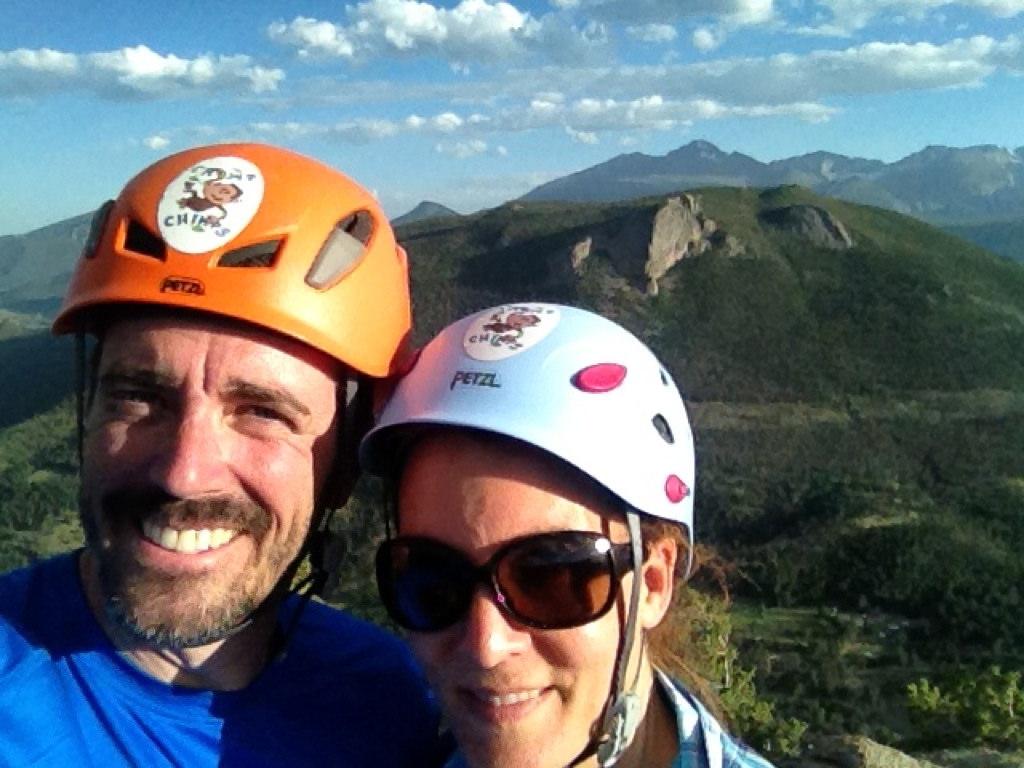Mother Crushers
Adventures in Climbing and ParenthoodAs a wife, mom of 4, grandmom of 1, world traveler, professional belay slave, part owner and general Cat Herder at Vertical Adventures, I’ve spent a lot of time around climbers, the climbing community and industry. Our investment in the business, coupled with my insurance responsibilities for the gym give me a lot of insight on risk mitigation and safety.
I was only given a title for this blog post, “The Real Dangers of Rock Climbing.” This seemed simple, the dangers are obvious: serious bodily injury and possibly death. But do I analyze the risks, philosophize on the life applications, or take a more metaphorical approach? The more I chewed on the title, the more complicated the task became. After a few false starts, it became obvious that The Real Dangers of Rock Climbing were not as simple as I thought.

The Real Dangers of Rock Climbing

At Vertical Adventures, we’ve had more than a few well-meaning marketing professionals and concerned customers tell us that we should “consider not having ‘Climbing is Dangerous’ so prominently displayed in your facilities and take it off the back of your staff shirts. You scare your customers and it doesn’t communicate confidence and reassurance.” To which I respond, “exactly, that’s the point,” inevitably drawing the weird wrinkled forehead look of confusion.
When we say, “Climbing is Dangerous”, we are not intending to discourage participation, cause alarm, nor frighten anyone. Neither are we using it as a marketing gimmick to appeal to adrenaline seekers looking to engage in risky behavior. Instead, we want to increase our community’s mindfulness by focusing on the dangers of climbing and encourage responsible behavior. Being in the moment is a foundational practice necessary to risk management and life in general.
Distraction accounts for the majority of accidents in rock climbing. Seasoned climbers, absent-mindedly forget the basics, like knot tying, clipping in, locking carabiners, and partner double checks. A classic example is Lynn Hill’s fall in France in 1989. Hill, inarguably one of the best female climbers in the world, fell 70 feet when she didn’t tie her knot. While in the process of tying into the rope, she diverted her attention to her climbing shoes and greeting a fellow climber then started her climb without tying her knot. A quick belayer double check would have revealed the mistake. Fortunately, she fell into a tree that broke her fall and she survived. Similarly, a parent on our climbing team broke both legs when she fell off a route after forgetting to clip into an auto-belay. Knowing this reality, we try to keep our climbers conscious of danger in order to cultivate mindfulness in their practices. However, there is no way to completely eliminate all risks and all participants must be aware and accept the dangers.
This can be particularly hard when we talk about our kids. I’ve watched one of our athletes wheeled out on a backboard during the awards ceremony. We’ve had broken feet and wrists, and growth plate injuries. There areinjuries and that won’t go away. In bouldering, nearly every climb is a fall, which means your child will fall a lot. Every fall has the potential to cause an injury. Climbing on ropes doesn’t have the same perpetual cycle of ground falls, but multiplies the number of safety tasks to perform, thus increasing the chance for something to be missed. As youth climbers develop, they learn to belay and literally hold the lives of others in their hands—maybe even yours one day. Mix these risks with the normal risks of being active and the list of dangers read like a TV pharmaceutical ad: abrasions, skin flappers, soft tissue damage, bone and joint pain, sprains, broken bones, and in at least one occasion, death.
I don’t believe climbing is out of the ordinary when I watch other high school sports, or I think about the injuries suffered by my daughters’ teammates playing soccer, or in high school football. But there is an opportunity for catastrophic injuries in climbing that might not exist in those other sports, and as a parent, you should know that. We love all of the kids here at the Training Center, and we want the opportunity to coach them and help them grow. But if you can’t accept the dangers that come with climbing, then it might not be the right sport.
We won’t compromise that message even if it would increase our profits. We will continue to put it on our walls, the back of our staff shirts, and throughout all we do. Climbing is dangerous, plain and simple. Being aware of the dangers has a way of focusing the mind and is an important piece of risk mitigation. As we foster mindfulness in our climbers, we hope it will transfer to other areas of their lives. After all, isn’t life dangerous, too?

Mardi lives in Worthington, OH where she raised her family and devoted her energy to making her home a welcoming place of comfort and love. She has worn several hats over the years including homemaker, owner of an interior painting business, PTA Vice President, Homeschooler, bureaucratic penetrator, and climbing gym owner. She enjoys bringing ideas to life, gardening, literally and metaphorically, most outdoor pursuits, and being a wife and mother.
